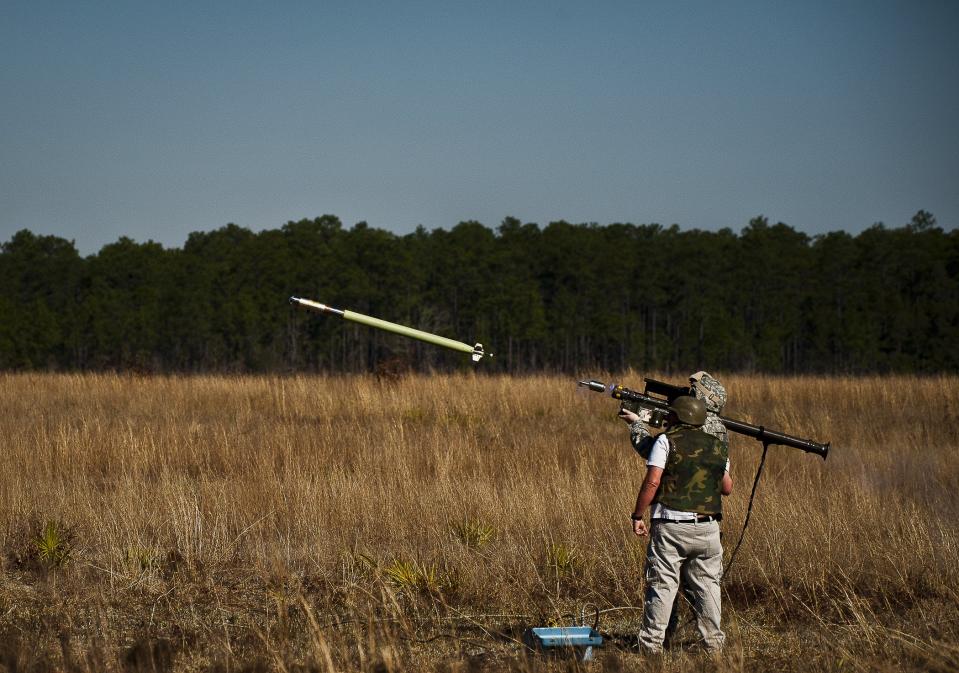The legendary Stinger missile is getting an upgrade that will make it more lethal

US Army
The Stinger missile is America's premier short-range air defense weapon, featuring in-flight guidance and an almost 7-pound warhead that sends shrapnel ripping through planes, helicopters, and pretty much anything else flying low. It can even be shot against ground vehicles when necessary.
Recently, the missile's manufacturer has created a new proximity fuse for the weapon — and it just passed qualification testing with flying colors.
The Stinger is a hit-to-kill weapon, meaning it always tries to physically impact the enemy target before it goes off. That turns the skin of the targeted aircraft into shrapnel that rips through the rest of the aircraft, maximizing damage to engines, fuel tanks, and even the pilots. It usually ends up near the engine, since the weapon uses heat to track targets.
But making contact with the target isn't always necessary, as the missile itself creates some shrapnel that will tear through the target's skin. So, if it were to explode nearby its target, it's still likely to damage or destroy the craft.
Now, the missile is being outfitted with a better proximity fuse that achieved a 100% hit rate during testing at Eglin Air Force Base, Florida.
That's great news for Stinger missile shooters. The weapon can be carried by ground troops or mounted on ground vehicles or helicopters, but firing the weapon is risky, especially against ground-support jets or helicopters.

Wikimedia Commons
If the Stinger crew fires the weapon and misses, whether because of a malfunction, shooter error, or the target's defenses, they're potentially in for a world of hurt. That's because it always takes time to fire a second missile, especially for ground troops firing the MANPADS, which is a tube with a single missile in it.
That means a very pissed off and scared pilot is going to turn around and follow the smoke plume back it its source, and the pilot is likely going to hit the missile source with everything they have available to drop and fire.
But with a proximity fuse, a missile that would otherwise be a near-miss will still go off, generating as much damage and shrapnel as it can. That means the helicopter that would be pivoting to attack is now suffering from damage. Hopefully, the damage is in the cockpit, control surfaces, or engine. A proximity detonation might even still be enough to destroy the target outright.
If not, then at least the crew on the ground has some breathing room as the air crew tries to get an idea of how damaged they are. This could be enough time for troops on the ground to get under cover or concealment or even to get off another shot.
This is especially useful against drones which typically don't require as much damage to be completely destroyed. And, considering just how much more prevalent drones are becoming, that could be key for future air defenders trying to maintain an air defense umbrella as Chinese or Russian forces test their defenses. All four Department of Defense branches carry the missile in combat.
Currently, the weapon is most widely deployed in single-shot missile tubes and carried by air defense squads on the ground. There's even an Army air defense battery that can jump these tubes into combat with other airborne troops. There's also the Avenger system, a modified Humvee with eight missiles mounted on it.
Finally, there is an Apache variant that can carry the missile, and all new Apache's come with the necessary mounting point and other hardware.
NOW WATCH: In 1959, the US sent mail by replacing a missile's nuclear warhead with mailboxes
See Also:

 Yahoo News
Yahoo News 

